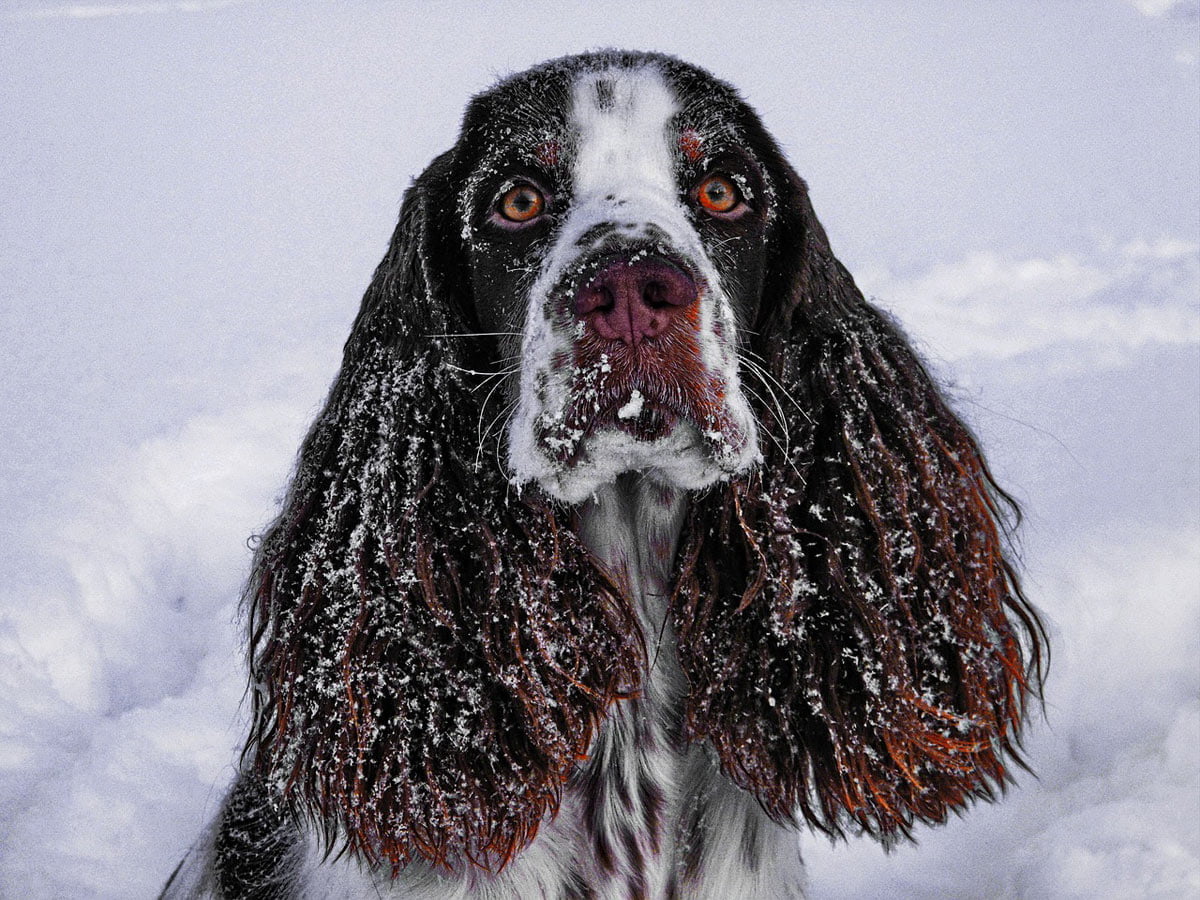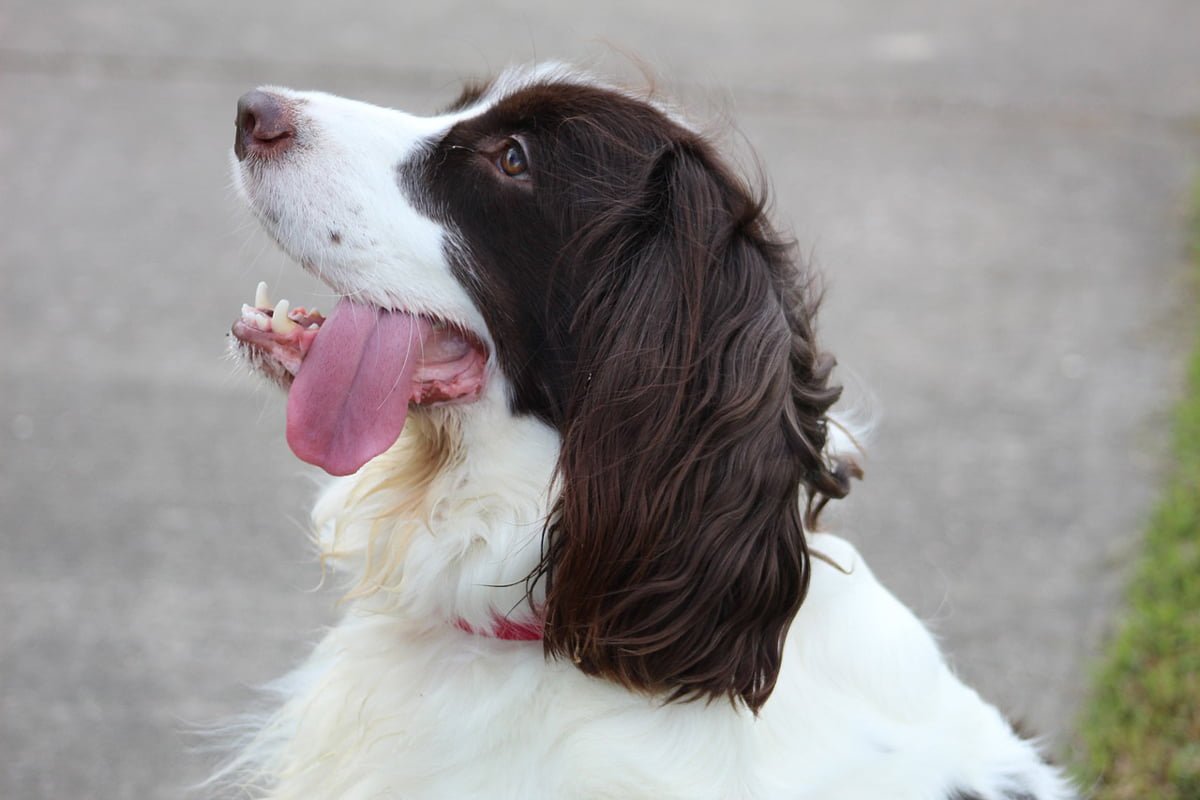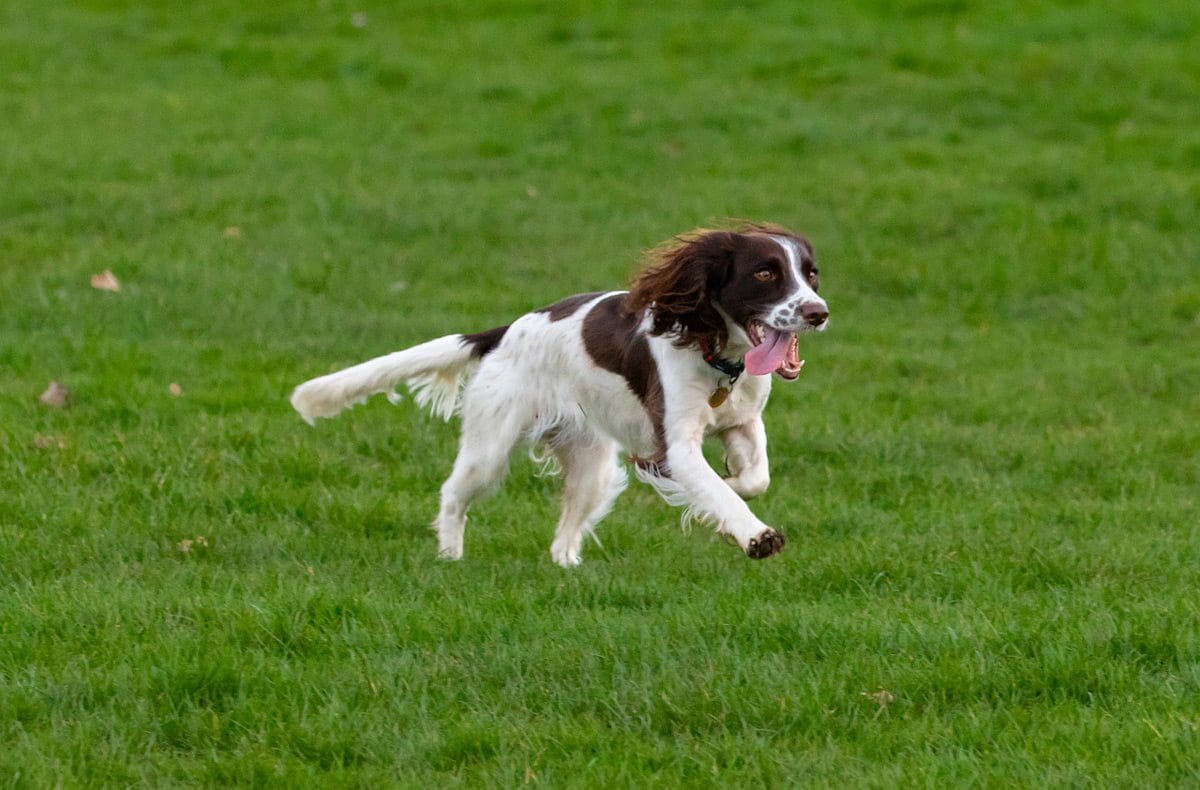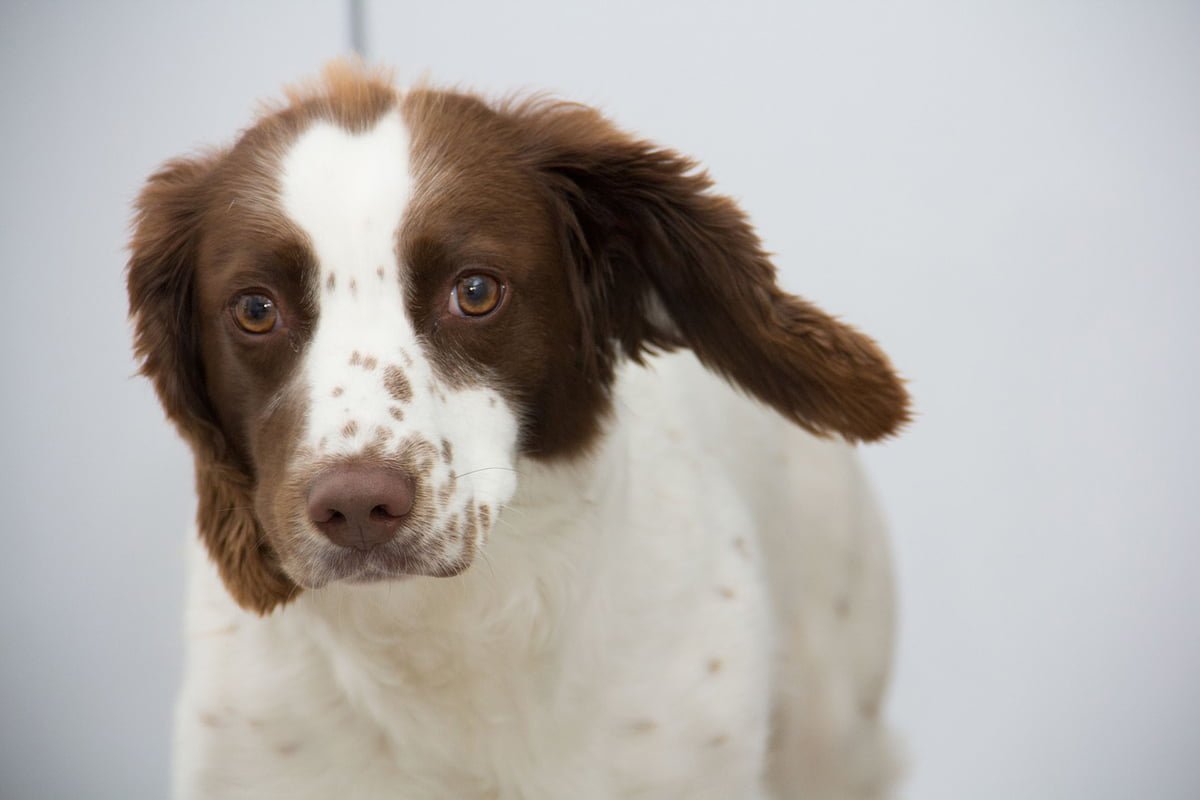
- Home
- Stud Dogs
Some of our most popular Stud Dog Breeds:
- Puppy Litters
- Dog Services
- Dog Breed Profiles
- Blog
- Contact Us
Springer Spaniel Breed Profile

Springer Spaniels have been bred for hunting and retrieving for hundreds of years, and despite their penchant for game bird flushing, these dogs make delightful pets thanks to their affable nature. The differences between Springer Spaniels bred for show, and those that are field bred, are the length and texture of their coats, and the shape of their ears. Working Springer Spaniels are lighter bodied with heightened senses, which is beneficial during hunting for practicality, speed, and agility. These inquisitive and alert dogs are affectionate and sociable, and if introduced from an early age to other small animals, they are able to coexist peacefully.
Typical Springer Spaniel Facts
Height:
Dog: 18-20 inches (46-51 cm)
Bitch: 17-19 inches (43-48 cm)
Weight:
Dog: 46-55 lbs (21-25 kg)
Bitch: 39-44 lbs (18-20 kg)
Average Litter Size: 4 to 8 puppies
Life Expectancy: 10 to 15 years
Good with Children: Yes
Kennel Club Classification: Gundog

Colour of a Springer Spaniel
The UK Kennel Club lists four colour pairings that are considered acceptable for the Springer Spaniel’s breed standard: black and white; black, white and tan; liver and white; and liver, white and tan. There are no solid single colours attested to this breed.
Grooming a Springer Spaniel
Springer Spaniels are double coated, and the fur from both of these layers has different density, lengths and texture. With this amount of fur, regular brushing is necessary to prevent matting and tangles. The Springer Spaniel’s coat will also benefit from trimming every few months to keep it looking its best; you can either learn a basic trimming technique yourself or take your pet to a professional groomer. The hair inside the entrance to the ear canal should be cut short to allow air flow. Bathing frequency depends on whether or not the dog is being displayed on the show ring, but even companion Springer Spaniels need to be washed at least every couple of months. Keep the ears and eyes clean for optimum health.

Springer Spaniel Common Ailments/Health Issues
As with all dogs, it’s important to check the history of the parents of the puppy for any genetic health issues that may be passed to their litter. A few ailments to look out for in the Springer Spaniel are hip, elbow and retinal dysplasia, ear infections, progressive retinal atrophy, autoimmune diseases, allergies, eyelash related conditions and Phosphofructokinase deficiency.
Temperament of the Springer Spaniel
The friendly Springer Spaniel is an honest and devoted breed, ideal for families of all ages. The Springer Spaniel makes an excellent companion, but doesn’t fare well in a guard dog role due to their sociable disposition. These dogs have a tendency towards clinginess, but their loyalty and obedience make them easy to live with.

Training a Springer Spaniel
The Springer Spaniel is a versatile breed, able to adapt to a wide variety of situations. This means that when it comes to training, they are readily able to learn a range of commands, tricks and working tasks. Their intelligence and high energy levels are key points to remember for their training; it’s important to keep these dogs stimulated both physically and mentally, otherwise they will resist learning new commands. Lengthy sessions will result in a lack of concentration, so vary their training in short bursts to keep it interesting, and provide rewards and positive reinforcement when they perform correctly.
Exercise for a Springer Spaniel
Springer Spaniels are very energetic dogs, so a lot of exercise is necessary for this breed in order to maintain good health and avoid boredom. You’re unlikely to easily tire out a Springer Spaniel, as these dogs need a minimum of two hours exercise each day, and many can handle even more. Break up the walks into varying lengths and incorporate vigorous playtimes into their day. Springer Spaniels are not fond of sprinting, however, they do enjoy water-based activities, such as swimming.

History of the Springer Spaniel
It’s hard to pinpoint the origins of Springer Spaniels, as Spaniels themselves have a very long history. The history of Spaniels dates back to around 2,000 years ago with the mention of Water Spaniels in documents pertaining to laws in Ireland, in later documents regarding Welsh laws and in even earlier texts predating these two examples. The name Spaniel is thought to mean “dogs from Spain”, although there is some uncertainty about whether this breed really did originate from this country. The general consensus is that if Spaniels did hail from Spain, they were probably brought to other European countries by Roman legions, which is how they found their way to the British Isles.
Just over 600 years ago, a type of hunting dog that seems to match the description of modern-day English Springer Spaniels was mentioned in a French book called ‘Livre de Chasse’ written by Gaston de Foix, a wealthy lord of Southern France. The name of the breed was not mentioned, however the behaviour of the dog, including springing and retrieving, is consistent with the Springer Spaniel.
It was during the 16th and 17th centuries that Land Spaniels, which, at the time, was a collective term for all Spaniels, began to be divided into two categories. Springer Spaniels were mixed into the category of Cocking Spaniel (later changed to Cocker Spaniel), and litters often contained both types of Spaniel. Much like the dogs described in Livre de Chasse, these dogs were used during hunts, with Springer Spaniels characteristically springing into the air as an aid to hunting game birds.
Further separation of the distinctive breeds occurred in Britain during early 19th century, and the first pure breed line of English Springer Spaniel was born in 1812 in Shropshire. This litter had a slightly different build and coat than modern Springer Spaniels, however, this strain is considered to be origin of the pedigree. English Springer Spaniels were finally officially recognised by the UK Kennel Club in 1902 and by the American Kennel Club in 1910.
Famous Springer Spaniel dogs
Two Springer Spaniels have received the Dickin Medal for gallantry during military combat. The first was Buster in 2003 and the second was awarded posthumously to Theo in 2012.

Springer Spaniel Stud Dog Listings
A dog owner since the early 80s, after convincing his parents to buy a Yorkshire terrier named Sadie, Darren created Dream Dogs so dog owners could find the best dog related information on the Internet.